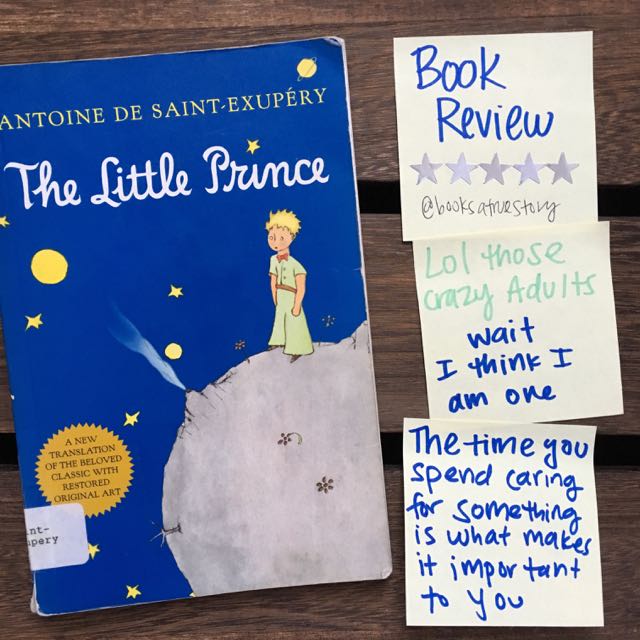In the realm of literature, few books possess the remarkable ability to transcend the constraints of age and time, captivating hearts and minds across generations. “The Little Prince,” penned with exquisite elegance by Antoine de Saint-Exupéry, stands as a paragon of such a rare literary achievement. This enchanting novella promises not only a poignant tale but also a transformative shift in perspective that lingers long after the final page has been turned. It beckons readers to don the whimsical lens of childhood curiosity, encouraging them to peer into the profound depths of human experience through the eyes of a child.
At first glance, “The Little Prince” may appear to be a simple story tailored for children; however, a deeper examination reveals its intricate layers of meaning and philosophical profundities. The narrative unfolds through the reflections of a stranded aviator, whose serendipitous encounter with the titular prince upon a desolate asteroid leads to an extraordinary exploration of love, loss, and the fundamental questions of existence. The storytelling invites us to reconsider our understanding of life, urging us to unearth the buried treasures of our own childhoods, where imagination reigns supreme.
The primary allure of “The Little Prince” lies in Saint-Exupéry’s masterful use of allegory and metaphor. Each character, each planet visited by the young prince serves as a symbolic representation of various aspects of human nature and societal constructs. For instance, one of the prominent figures encountered is the narcissistic businessman, whose insatiable quest for wealth and power epitomizes the absurdity of adult priorities. Through this illustration, readers are prompted to reflect on their own pursuits, particularly the relentless chase for materialistic gain that often eclipses the simple joys of connection and wonder.
Furthermore, the emotional undercurrents prevalent throughout the narrative invite readers to confront their own vulnerabilities. The poignant relationship between the little prince and his beloved rose serves as a cornerstone of this exploration. Their interactions encapsulate the essence of love—fraught with both beauty and heartbreak. The little prince’s devotion to his rose, despite her temperamental nature, illustrates the complexities of affection and the inherent fragility of relationships. It is a reminder to cherish the unique connections we cultivate, for they shape our understanding of love in its myriad forms.
Through a series of thought-provoking encounters, the little prince’s travels illuminate the often-overlooked wisdom embedded in the simplicity of childhood. Each planet harbors a unique inhabitant, offering distinct lessons that are as timeless as they are relevant. The fox, for example, articulates the profound notion that “what is essential is invisible to the eye.” This sentiment encapsulates the heart of the narrative, asserting that deeper understanding is often obscured by superficial distractions. In a world consumed by relentless ambition and technological distractions, this timeless wisdom serves as a clarion call to reconnect with the essence of what truly matters—the relationships we nurture and the moments we share.
As the protagonist journeys through these surreal landscapes, readers are beckoned to contemplate their own life philosophies. The text awakens a sense of introspection; it triggers a yearning to detach from the mundane and navigate toward the whimsical landscapes of imagination and creativity. This shift in perspective provides a refreshing lens through which to view our realities—a perspective that fosters curiosity rather than complacency. The narrative invites readers to pose questions that challenge conventional wisdom. What does it mean to grow up, and at what cost do we lose our sense of wonder? In fostering such inquiries, “The Little Prince” transcends mere storytelling and transforms into a philosophical treatise on the nature of existence.
Moreover, Saint-Exupéry’s exquisite prose, laden with lyrical beauty, enhances the reader’s journey. His vivid imagery evokes a dreamlike quality, transporting us to the whimsical worlds populated by eccentric characters and enchanting landscapes. The illustrations, created by the author himself, enrich the narrative, allowing readers to visualize the delightful absurdity of the tales being recounted. The cohesive blend of text and art serves to further foster a sense of curiosity, drawing readers in and compelling them to linger in the pages of this evocative work.
The story culminates in a powerful denouement that conveys the profundity of love, loss, and the inevitable cycle of life. The close-knit bond between the little prince and the aviator serves as a reminder that while individual journeys may diverge, the connections we forge remain enduring. The bittersweet embrace of memories imparts a sense of melancholy, yet simultaneously, it ignites a flame of hope. The little prince’s journey reflects a universal truth: that true beauty lies in the ephemeral moments that define our existence.
In conclusion, “The Little Prince” defies simplistic categorization as merely a children’s tale; it serves as an invitation to explore the vast complexities of life through the eyes of innocence. By challenging readers to relinquish the burdens of adulthood and revive their innate curiosity, Saint-Exupéry emboldens us to view the world anew. The narratives we encounter and the relationships we cherish are but fragments of a larger tapestry—one that shapes our understanding of love, loss, and the essence of humanity. This book promises not only to pique curiosity but also to catalyze a profound reawakening of our senses. In the end, perhaps, it is not only the little prince whose perspective shifts but also ours, as we confront the delightful absurdities of the human condition.
